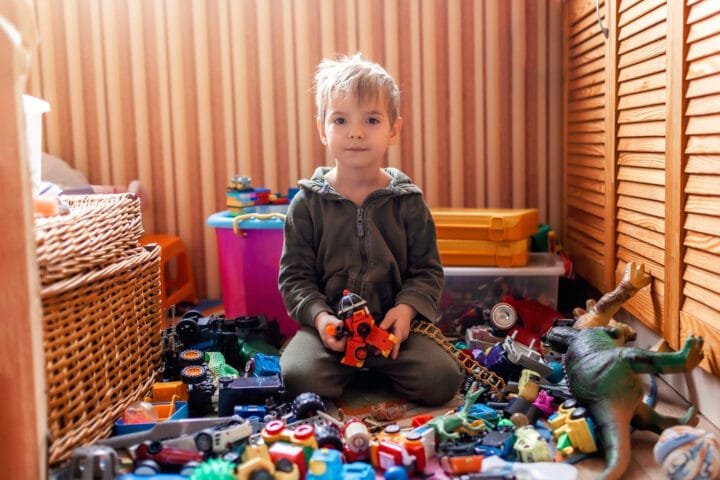Real Stories, Real Solutions: How to Teach Kids About Online Scams and Fraud That Works
The chocolate chip cookies were just starting to brown when my world turned upside down. The kitchen timer showed three minutes remaining, and the sweet aroma filled our suburban home on what seemed like any other peaceful Sunday afternoon. That’s when Jake, my usually cautious 10-year-old, burst through the door with the kind of excitement that makes every parent’s stomach drop.
“Mom! Mom! I won! They picked me!” His eyes sparkled dangerously. “This super-rare gaming skin – it’s worth thousands! I just need Dad’s credit card to verify my account!”
The cookie sheet clattered against the counter, forgotten. I felt that familiar maternal dread creeps up my spine – the one that signals something isn’t quite right. But this time was different. This moment would spark a movement that would transform not just our family, but our entire community’s approach to digital safety.
The Digital Wild West: Where Our Story Begins
Let me paint you a picture of what we were up against. Remember those obvious email scams about foreign princes? Those seem almost quaint now. Today’s digital predators are master psychologists who speak fluent kid. They know your child’s favorite games, their friends’ usernames, and exactly which exclusive items will make them drop their guard.
That Sunday afternoon, the scam targeting Jake was nothing short of masterful. The website looked identical to his favorite gaming platform. They had fake accounts mimicking his gaming buddies, all enthusiastically vouching for this “amazing prize.” Even I, the self-proclaimed digital-savvy mom, had to look twice.
“But Mom, look!” Jake scrolled through pages of seemingly legitimate testimonials. “Even Tyler got his yesterday!” Tyler, his best friend since kindergarten, appeared to have posted about his success. Except it wasn’t really Tyler at all.
From Kitchen Table Talks to Community Movement
That night, after the cookies had gone cold and Jake was safely tucked in bed, I couldn’t sleep. I spent hours researching, diving deep into gaming forums and parent support groups. The statistics I found were terrifying – over 60% of kids Jake’s age had encountered similar scams. But numbers don’t tell the whole story. What really kept me up was knowing how close we’d come to becoming another statistic.
The next morning, over breakfast, Jake and I had our first “Digital Detective” meeting.
“Mom,” he said, pushing his cereal around the bowl, “I feel kind of stupid for almost falling for it.”
“No, honey,” I replied, sliding into teaching mode. “You feel experienced. There’s a difference.”
That’s when something clicked. We didn’t need another set of rules – we needed a whole new approach to digital safety. And who better helps design it than a kid who’d almost been scammed?
The Kitchen Command Center
Our kitchen whiteboard, usually reserved for grocery lists and chore schedules, became our “Threat Intelligence Center” (Jake’s name – he has a flair for the dramatic). Every suspicious message, every too-good-to-be-true offer, every weird friend request got analyzed and documented.
But here’s where things have got interesting. A week after our close call, Jake’s friend Tyler came over for a playdate. As the boys were setting up their gaming station, Tyler received a message about an “exclusive” Minecraft server opportunity.
“Wait!” Jake practically jumped across the room. “Mom, can we run it through the system?”
I watched, proud and amazed, as my son walked his best friend through our safety checklist:
- Is it asking for immediate action?
- Does it seem too good to be true?
- Can we verify the sender?
- What do they want from us?
Tyler’s eyes widened as each red flag emerged. “Dude,” he whispered, “we need to tell everyone about this.”
The Ripple Effect
Word spread faster than a viral TikTok dance. Within weeks, our after-school Digital Detective Club had twenty members. Parents started calling, asking if their kids could join. Even Mrs. Thompson, Jake’s computer science teacher, asked him to give him a presentation to the class.
The movement was growing, but so were the challenges. Scammers were getting smarter, using AI-generated voices and deep-fake videos. But you know what? Our kids were getting smarter too.
The Gaming Guild Guardians Are Born
Remember those quiet Sunday afternoons? They’re now filled with excited chatter of what we call “The Gaming Guild Guardians” – a group of kids turned digital safety advocates. It started with just Jake and Tyler, but grew into something none of us could have predicted.
Last month’s incident perfectly captures how far we’ve come. It was during one of our regular Sunday sessions, kids sprawled across our living room floor with tablets and laptops, when Emma (our resident Roblox expert) spotted something suspicious.
“Guys, check this out!” she called, turning her screen toward the group. A sophisticated scam was unfolding in real-time – a fake gaming tournament with a $5,000 prize pool. The website looked flawless, complete with professional graphics and a countdown timer creating urgency.
Two months ago, this might have fooled everyone. But now? Our young detectives immediately went to work:
“Look at the URL – there’s a tiny dash where there shouldn’t be,” Jake pointed out. “The testimonials all use the same three profile pictures,” Tyler added. “And guys,” Emma grinned, “they’re asking for Discord Nitro as an entry fee. Official tournaments never do that!”
Within minutes, they’d not only identified the scam but also:
- Documented all the red flags
- Alerted their gaming communities
- Created a warning post for their school’s digital safety forum
- Reported on the site to gaming platform moderators
The Day Everything Changed
The real turning point came during last month’s school assembly. Principal Martinez had invited a cybersecurity expert to speak about online safety. As the presenter started explaining basic scam tactics, Jake raised his hand.
“Sir,” he said politely, “what about AI-generated voice scams in gaming chats? We’ve been seeing a lot of those lately.”
The expert paused, clearly surprised. Soon, our kids were leading the discussion, sharing real-world examples and solutions they’d developed. The presentation turned into an impromptu workshop, with our Gaming Guild Guardians teaching both students and teachers.
That afternoon, my phone wouldn’t stop buzzing with messages from amazed parents and educators. But the most touching moment came from Mrs. Chen, whose son had lost $200 to a scam last year.
“Your kids,” she said, fighting back tears, “they’re not just preventing scams. They’re giving our children their power back.”
When Kids Become Teachers
No one was more surprised than me when the local news van pulled up outside our house last month. “LOCAL KIDS CREATE DIGITAL SAFETY REVOLUTION” read the headline. Jake, wearing his favorite gaming headset like a crown, could barely contain his excitement.
“Mom,” he whispered just before the interview, “remember when I almost fell for that scam? That was, like, the best mistake ever!”
And you know what? He was right. That near-miss had sparked something remarkable. Our living room, once just a place for video games and homework, had become command central for what the kids now called “Operation Safe Gaming” (they love their dramatic names).
Let me share a typical Thursday afternoon with you:
The doorbell rings constantly as kids stream in after school, laptops and tablets tucked under their arms. They settle into their usual spots – Jake and Tyler at the kitchen counter, Emma and her crew on the living room floor, the middle school team clustered around the dining table. Each group has their specialty:
- The Scam Spotters (ages 8-10): Focusing on basic red flags
- The Code Crackers (11-13): Analyzing suspicious links and websites
- The Social Media Squad (13-15): Monitoring platform-specific threats
The Day of the Big Hack
Everything we’d built was put to the test last month during what we now call “The Great Gaming Hack.” It started as a normal Saturday morning – until Jake’s friend Marcus burst through our door, out of breath and panicked.
“They got everyone!” he gasped. “The whole server!”
A sophisticated hacking group had targeted their favorite gaming platform, sending convincing direct messages about “account verification” to thousands of young players. The scammers had done their homework, using the game’s actual logos, copying official email formats, even referring to recent in-game events.
But our kids were ready.
Within hours, the Gaming Guild Guardians had:
- Created a warning video that went viral on TikTok
- Set up an emergency Discord channel for affected players
- Developed a step-by-step recovery guide for hacked accounts
- Organized a virtual safety workshop attended by over 300 kids
The gaming platform’s security team actually reached out to thank them. “We’ve never seen kids this organized,” they said. “You’ve prevented thousands of accounts from being compromised.”
The Digital Safety Revolution
As I sit here in our kitchen, watching Jake teach his little sister how to spot fake gaming offers, I can hardly believe how far we’ve come. That terrifying Sunday afternoon feels like a lifetime ago. The cookie recipe that started it all is still magnetized to our fridge, now surrounded by newspaper clippings and thank-you notes from families across the country.
“Remember, Emily,” Jake explains patiently, “if they say you’re the ‘chosen one’ and need to act super-fast, that’s usually the first red flag.”
Emily, all of seven, nods seriously while clutching her tablet. “Like when that unicorn game said I was the special millionth player?”
“Exactly!” Jake beams. “You’re getting it!”
The Unexpected Ripple Effects
What started as one family’s response to a near-miss has grown beyond anything we could have imagined:
- 15 schools have adopted our “Digital Detective” curriculum
- Over 1,000 kids have joined Gaming Guild Guardian chapters
- Reported scam incidents in our district are down 70%
- Three major gaming companies now consult with our young experts
But the numbers don’t tell the whole story. The real magic lies in the small moments:
Like last week, when shy Kevin from Jake’s class stopped a sophisticated Discord scam and proudly presented his findings at our weekly meeting. Or when Maria, who lost her entire allowance to a scammer last year, prevented her entire Roblox group from falling for a similar trap.
The Future Digital Warriors
Yesterday, during our monthly community meetup (now hosted in the school gymnasium because we’ve outgrown my living room), I watched in awe as our original team trained the newest batch of Digital Detectives.
“The scammers are getting smarter,” Jake told the wide-eyed newcomers, “But so are we. And you know what’s cooler than falling for a scam? Being the one who stops it.”
The room erupted in cheers and high-fives. These kids, once potential victims, had been transformed into confident digital warriors.
Looking Back, Looking Forward
As I finish writing this, Jake has just rushed in with news about their latest initiative – a peer-to-peer support network for kids who’ve been scammed. “Because feeling stupid about it is worse than losing stuff,” he explains with the wisdom that still catches me off guard.
That scary Sunday afternoon could have ended very differently. We could have simply changed passwords, set stricter rules, and moved on. Instead, it sparked a movement that’s changing how an entire generation approaches digital safety.
And it all started with some chocolate chip cookies and a mother’s instinct that something wasn’t quite right.
The Legacy
Today, our kitchen whiteboard still serves as the “Threat Intelligence Center,” but it’s covered with more than just warnings. There are success stories, thank-you notes, and the newest addition – a countdown to next month’s “ScamCon 2025,” our community’s first kid-led digital safety convention.
As Jake would say, “Being scam-smart isn’t just about staying safe – it’s about helping others stay safe too.”
And really, isn’t that the best lesson of all?
FAQs
Start as soon as your child begins accessing digital devices – typically around age 5-6. However, adapt your approach based on their maturity level. For younger children (5-8), focus on basic concepts like not sharing personal information and asking parents before clicking links. For older kids (9-12), dive deeper into recognizing scam patterns and understanding why people create scams. Teenagers need more sophisticated guidance about social engineering and complex fraud schemes. Remember, it’s never too early to start with appropriate age lessons.
Focus on empowerment rather than fear. Frame digital safety as a superpower – like being a detective who can spot tricks. Use positive reinforcement when they identify potential scams and make learning interactive through games and real-world examples. Create an open dialogue where they feel comfortable sharing suspicious activities without fear of punishment. Turn safety checks into habits (like wearing a seatbelt) rather than presenting them as scary rules. Celebrate their wins when they successfully identify and avoid scams.
The most prevalent scams targeting children include:
- Gaming-related scams (fake currency generators, “free” premium items)
- Social media friend impersonation scams
- Fake influences giveaways and contests
- “Free” Robux/V-Bucks schemes
- Phishing attempts through popular gaming platforms
- Malicious downloads disguised as game mods or cheats These scams constantly evolve, so stay updated through reliable gaming and cybersecurity news sources.
First, stay calm and reassure your child that it’s not their fault – scammers are professionals at manipulation. Then:
- Immediately change all passwords
- Document everything related to the scam
- Contact your bank if any financial information is shared
- Report on the incident at the platform where it occurred
- Use it as a learning opportunity to prevent future incidents. Most importantly, maintain open communication so they’re not afraid to tell you about future suspicious activities.
Strike a balance through:
- Setting clear rules and expectations together
- Using family-friendly security tools that focus on protection rather than surveillance
- Creating a “trust but verify” system where kids earn more online freedom through demonstrated responsibility
- Having regular, open discussions about their online experiences
- Teaching them to be their own best monitors by developing critical thinking skills
- Establishing family device-free times and zones the goal is to guide and protect while building trust and independence.
Top 4 Books About Teaching Kids Online Safety
Author: Kristen A. Jenson
Key Features:
- Age Range: 3-7 years
- Gentle, age-appropriate messages about online safety
- Colorful illustrations and engaging storytelling
- Simple “Turn, Run & Tell” approach for young kids
Author: Dina Alexander
Key Features:
- Age Range: 9-12 years
- Adventure-style narrative teaching media literacy
- Covers advertising, social media, movies, and fake news
- Interactive elements for practical learning
Author: Lori Getz
Key Features:
- Age Range: 9-13 years
- Comprehensive coverage of digital safety
- Practical workbook format
- Real-world examples and scenarios
- Honest and entertaining approach
Author: Carrie Anton
Key Features:
- Age Range: 9-12 years
- Covers everything from texting to cyberbullying
- Includes quizzes and practical advice
- Focus on safe navigation of digital spaces
- Girl-centric approach to online safety















































































